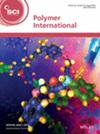下载PDF
{"title":"利用液晶显示器作为还原光聚合技术获得木质素基聚合物复合材料的3D打印","authors":"Giovanna Colucci, Francesca Sacchi, Federica Bondioli, Massimo Messori","doi":"10.1002/pi.6783","DOIUrl":null,"url":null,"abstract":"<p>The present work aims to improve the sustainability of polymers and may pave the way for the development through 3D technologies of innovative composites useful for many industries. It highlights the preparation of lignin-based composites by adding lignin to an acrylate epoxidized soybean oil (AESO) resin using a liquid crystal display (LCD) 3D printer. The formulations were obtained by adding tetrahydrofurfuryl acrylate (THFA) as reactive diluent to the AESO matrix as the starting reference system. Then, lignin-based composites were obtained by dispersing lignin at different concentrations within the AESO-THFA resin. The viscosity and printability of the photocurable formulations were first studied because they play a key role in a vat photopolymerization process. Several 3D printed parts were successfully realized via LCD exhibiting high resolution and accuracy and well-detailed geometries. SEM analyses revealed that lignin particles were homogeneously dispersed within the crosslinked AESO-based network. The thermal and mechanical properties of the photocured lignin-based composites were tested by TGA, dynamic mechanical thermal analysis and tensile tests, underlining that the presence of lignin led to a decrease of the elastic modulus and tensile strength, and a slight increase of the glass transition temperature, leaving the thermal stability unchanged. The incorporation of lignin into an AESO polymer network can significantly improve the sustainability of polymers designing and printing innovative lignin-based composites useful for many industrial fields. © 2025 The Author(s). <i>Polymer International</i> published by John Wiley & Sons Ltd on behalf of Society of Chemical Industry.</p>","PeriodicalId":20404,"journal":{"name":"Polymer International","volume":"74 9","pages":"828-838"},"PeriodicalIF":3.6000,"publicationDate":"2025-05-28","publicationTypes":"Journal Article","fieldsOfStudy":null,"isOpenAccess":false,"openAccessPdf":"https://scijournals.onlinelibrary.wiley.com/doi/epdf/10.1002/pi.6783","citationCount":"0","resultStr":"{\"title\":\"3D printing of lignin-based polymeric composites obtained using liquid crystal display as a vat photopolymerization technique\",\"authors\":\"Giovanna Colucci, Francesca Sacchi, Federica Bondioli, Massimo Messori\",\"doi\":\"10.1002/pi.6783\",\"DOIUrl\":null,\"url\":null,\"abstract\":\"<p>The present work aims to improve the sustainability of polymers and may pave the way for the development through 3D technologies of innovative composites useful for many industries. It highlights the preparation of lignin-based composites by adding lignin to an acrylate epoxidized soybean oil (AESO) resin using a liquid crystal display (LCD) 3D printer. The formulations were obtained by adding tetrahydrofurfuryl acrylate (THFA) as reactive diluent to the AESO matrix as the starting reference system. Then, lignin-based composites were obtained by dispersing lignin at different concentrations within the AESO-THFA resin. The viscosity and printability of the photocurable formulations were first studied because they play a key role in a vat photopolymerization process. Several 3D printed parts were successfully realized via LCD exhibiting high resolution and accuracy and well-detailed geometries. SEM analyses revealed that lignin particles were homogeneously dispersed within the crosslinked AESO-based network. The thermal and mechanical properties of the photocured lignin-based composites were tested by TGA, dynamic mechanical thermal analysis and tensile tests, underlining that the presence of lignin led to a decrease of the elastic modulus and tensile strength, and a slight increase of the glass transition temperature, leaving the thermal stability unchanged. The incorporation of lignin into an AESO polymer network can significantly improve the sustainability of polymers designing and printing innovative lignin-based composites useful for many industrial fields. © 2025 The Author(s). <i>Polymer International</i> published by John Wiley & Sons Ltd on behalf of Society of Chemical Industry.</p>\",\"PeriodicalId\":20404,\"journal\":{\"name\":\"Polymer International\",\"volume\":\"74 9\",\"pages\":\"828-838\"},\"PeriodicalIF\":3.6000,\"publicationDate\":\"2025-05-28\",\"publicationTypes\":\"Journal Article\",\"fieldsOfStudy\":null,\"isOpenAccess\":false,\"openAccessPdf\":\"https://scijournals.onlinelibrary.wiley.com/doi/epdf/10.1002/pi.6783\",\"citationCount\":\"0\",\"resultStr\":null,\"platform\":\"Semanticscholar\",\"paperid\":null,\"PeriodicalName\":\"Polymer International\",\"FirstCategoryId\":\"92\",\"ListUrlMain\":\"https://scijournals.onlinelibrary.wiley.com/doi/10.1002/pi.6783\",\"RegionNum\":4,\"RegionCategory\":\"化学\",\"ArticlePicture\":[],\"TitleCN\":null,\"AbstractTextCN\":null,\"PMCID\":null,\"EPubDate\":\"\",\"PubModel\":\"\",\"JCR\":\"Q2\",\"JCRName\":\"POLYMER SCIENCE\",\"Score\":null,\"Total\":0}","platform":"Semanticscholar","paperid":null,"PeriodicalName":"Polymer International","FirstCategoryId":"92","ListUrlMain":"https://scijournals.onlinelibrary.wiley.com/doi/10.1002/pi.6783","RegionNum":4,"RegionCategory":"化学","ArticlePicture":[],"TitleCN":null,"AbstractTextCN":null,"PMCID":null,"EPubDate":"","PubModel":"","JCR":"Q2","JCRName":"POLYMER SCIENCE","Score":null,"Total":0}
引用次数: 0
引用
批量引用




 求助内容:
求助内容: 应助结果提醒方式:
应助结果提醒方式:


